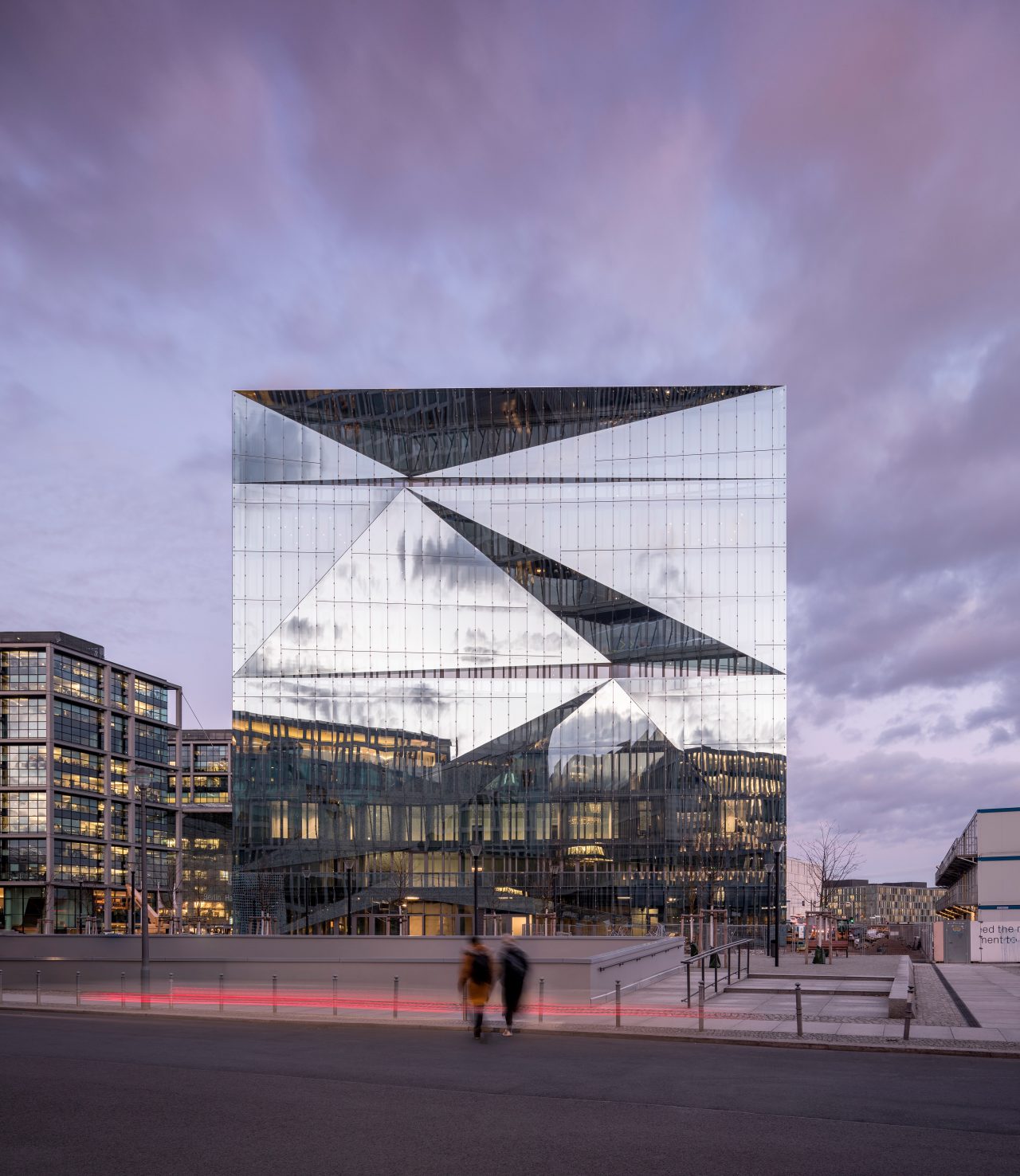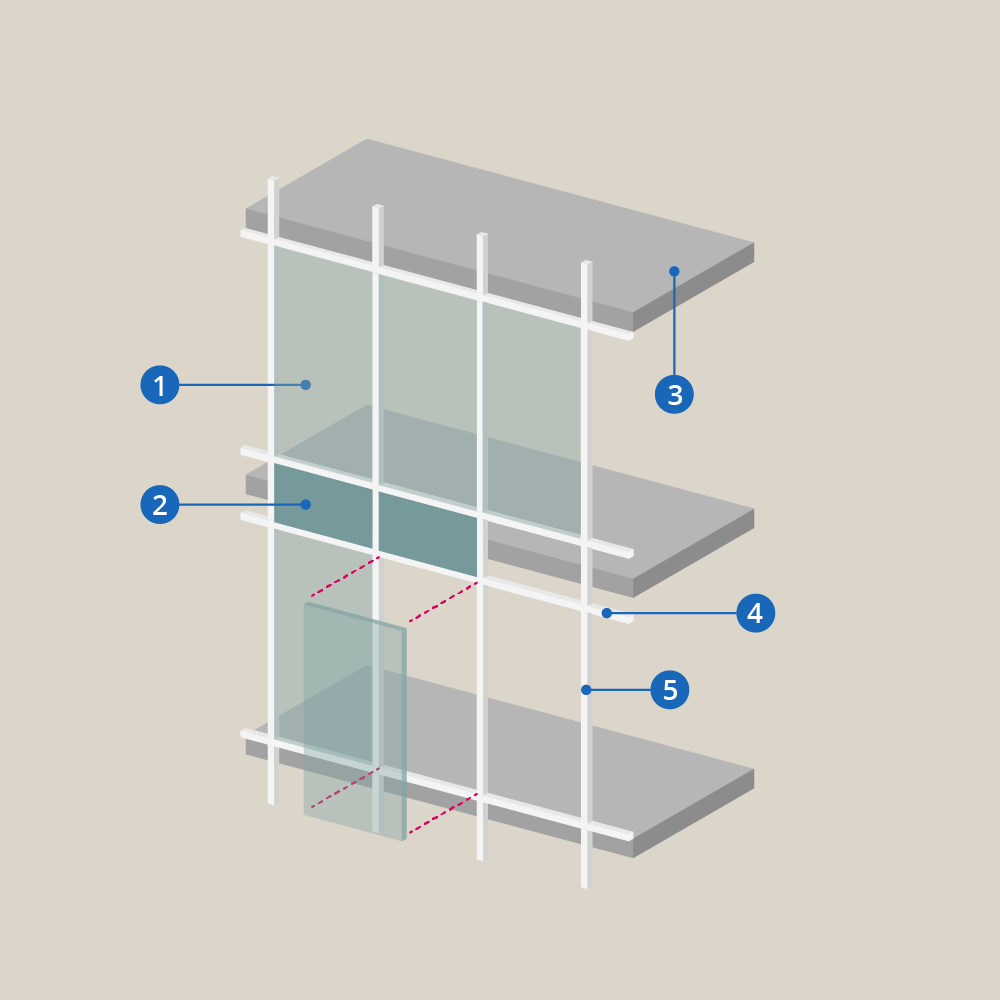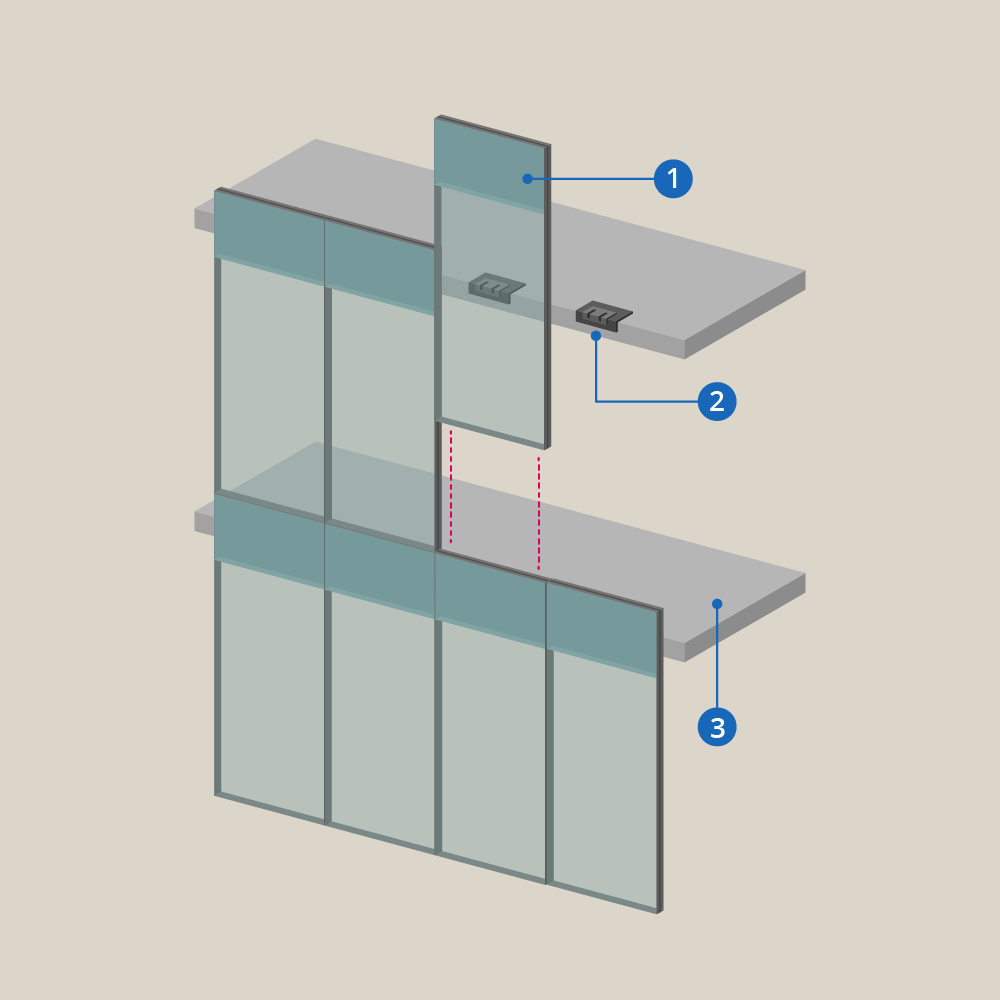Glass curtain wall

The curtain wall method of glazing enables glass to be used in large, uninterrupted areas of a building envelope, creating consistent, attractive facades. The variety of glass products available today allows architects and designers to control many aspects of aesthetics and performance, including thermal and solar control, sound reduction, security, as well as color, light transmission and glare.
What is a curtain wall?
A curtain wall is a non-structural outer covering of a building, typically made of lightweight systems. Unlike traditional walls, curtain walls do not carry the load from the building itself other than the weight of the materials contained in the wall. Like a hanging curtain, curtain walls are typically “hung” from the slab edge.
What are the different types of curtain walls?
There are 2 main categories of glass curtain wall if we look at their fabrication and installation methods: stick systems and unitized (or modular) systems.
Stick systems
A frame is assembled on-site using mullions, transoms, and glass or opaque panels (potentially glass spandrels), which are designed to fit together as a unitized system. Stick systems typically require additional site labor, which can slow down the installation process.
- Vision glass panel
- Spandrel glass panel
- Floor slab
- Transom
- Mullion

Unitized systems
Elements similar to stick systems are pre-assembled into large units glazed at the glazier facilities. These units are then transported to the construction site, where they are erected by the installer glazier to build the curtain wall. Typically, the standard size of a module is approximately one story tall and 5 to 6 feet (1.5 to 1.8 m) wide, though each section can include multiple modules.
- Vision glass/spandrel unit
- Anchor
- Floor slab

What are the benefits of a glazed curtain wall?
Energy efficiency*: high-performance glazing with low-E coatings can provide thermal insulation and/or solar control and therefore have a positive impact on the overall energy efficiency of the building envelope. Different types of coatings can be combined to optimize the energy performance of the glazing based on the project requirements, climate location and façade orientation.
Aesthetic appeal: curtain wall constructions enable the use of glass in extensive, uninterrupted areas, resulting in attractive glass facades. The variety of glass substrates and coatings available allow to create combinations that can help achieve the architect’s design vision and create a bold statement, while meeting the energy performance requirements.
Natural lighting: large and uninterrupted glazed areas can allow plenty of natural daylight into a building, while creating a sense of openness and connection with the surroundings. Access to natural light and a view to the nature can help improve the comfort and productivity of a building occupants.
Sound control*: the use of sound control glass can help reduce disturbing noise from the outside and create a quiet environment inside a building. This is especially interesting for projects located in urban areas with a lot of road traffic, or for buildings located close to train stations or airports.
Quality control: curtain walls, especially unitized systems, can offer greater control over quality. Low-e coatings are well-suited for pre-fabricated unitized systems, where quality control can be effectively managed in a controlled assembly line environment. Pre-fabrication also has the advantage of bringing different entities and trades together under one roof.
* Although the glass represents most of the curtain wall surface, the energy and sound control performances also depend on the performance of the other elements of the curtain wall system, and how well the elements perform all together as an assembly.
👉 Expert tip:
“In large glazed facades such as curtain walls, balancing the benefits of natural light with the need to control glare is important to help maintain the visual comfort of building occupants. Selecting the right glass can help control glare while letting in ample light and providing visual comfort. Besides the amount of visible light passing through the glass, glare is influenced by several factors, including elevation exposure, window-to-wall ratio, interior space layout, and highly reflective surfaces around the building.”
Want to see more curtain wall projects in your area made with Guardian glass? Visit the Project Locator.
What glass can be used in a curtain wall system?
Well, it depends on your project’s specific needs – and as these might be multiple, you can combine some of the below products:







